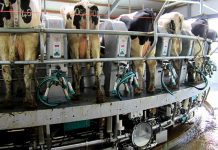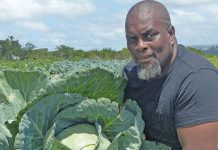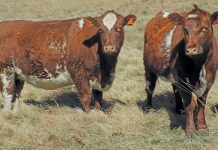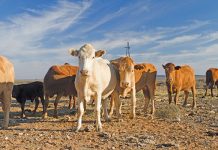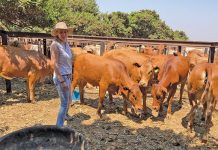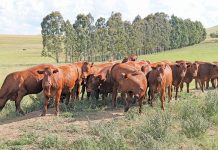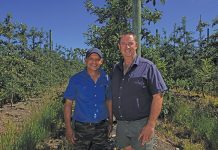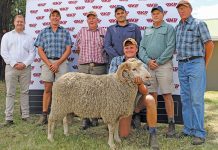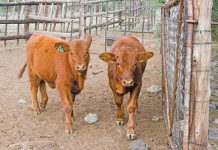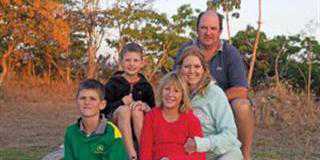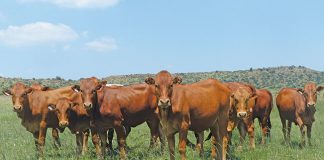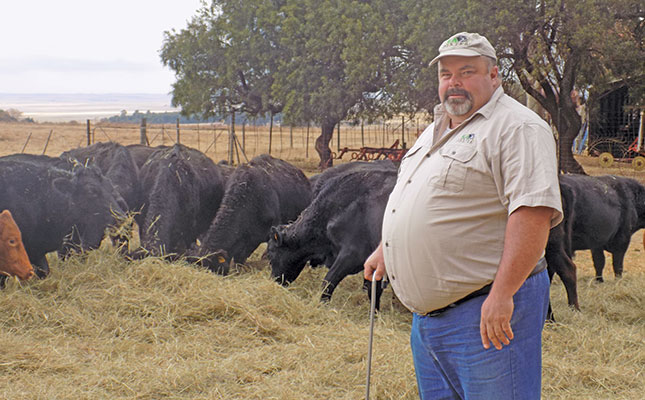
Photo: Annelie Coleman
The Dexter has become a viable dual-purpose cattle breed for South African farmers, according to Gauteng-based stud owner Kobus van der Linde. In fact, he enthuses, it is “a highly economical breed, which makes perfect financial sense”.
Van der Linde should know; an experienced commercial livestock producer who farms on Witfontein (120ha) near Bronkhorstspruit, he acquired his first Dexters 20 years ago as a hobby or ‘mini business’ for his children. It did not take long, however, before he and his family took note of the breed’s excellent carcass quality and outstanding milk production. So taken was Van der Linde by these qualities that he ended up focusing entirely on the breed, selling his other cattle and establishing his Lundi Dexter stud.
“The perception that Dexters are merely cute and fluffy has long been proven otherwise,” he says. “In South Africa, demand now far exceeds supply. My decision to switch to Dexters wasn’t based on emotion, but on simple economics.
“To begin with, one shouldn’t be fooled by the breed’s diminutive size. The Dexter has a higher proportion of saleable, well-marbled meat than most other breeds, and it’s very tender, with excellent texture. And the Dexter cow is an outstanding milker.”
In addition, he explains, the breed is hardy and adaptable, traits that make perfect sense considering the Dexter’s origins in the south and south-western parts of Ireland, where they were kept by smallholders. Here the animals roamed about in relatively wild mountainous districts, developing non-selective grazing habits and stamina.
Finally, the Dexter is not only a small-framed animal, but has a docile temperament, which simplifies handling.
Meat quality
Dexters have a significantly larger rib-eye muscle relative to their bodyweight than most another breeds, explains Van der Linde. This equates to a higher proportion of saleable meat.
The rib -eye, one of the largest muscles of the carcass, runs the full length of the back and correlates strongly with the total amount of muscle in the carcass. This correlation is due to the fact that all muscles are proportional to one another. A large rib-eye muscle is therefore a good indication of an increased yield of retail cuts of meat.
Van der Linde markets bull weaners through the private retail sector and sells weaners to a local butcher, who can scarcely meet the demand for Dexter beef. He ascribes its popularity to growing health consciousness among consumers as well as the affordability of the Dexter’s small portion sizes, an important factor in the current economic climate.
The Dexter T-bone, for example, is smaller than the same cut from medium- and large-farmed carcasses. This, plus the superb quality of the beef, ensures a superior dining experience at a reasonable price.
Growing milk demand
Demand for Dexter milk is also growing, thanks to its excellent quality, and the milk often earns a premium on the market.
“The fat globules of the Dexter’s milk are very small, so the milk is homogenous and readily digestible,” explains Van der Linde.
He adds that the A2 protein, which is present in Dexter milk, is regarded as preferable to the A1 protein found in the milk of other breeds. The milk also compares well with the milk of other dual-purpose breeds and even with that of pure dairy breeds.
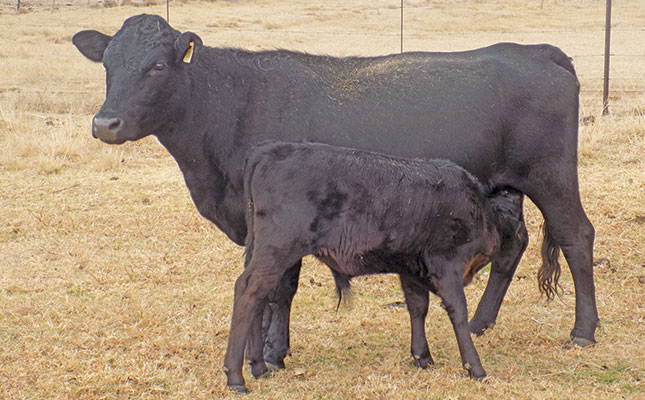
“I regularly receive inquiries from prospective buyers wanting animals for milking purposes.”
Van der Linde has always been fairly particular about udder quality in his herd, but recently decided to focus even more intently on this aspect in order to meet demand for Dexter milk.
In particular, he looks for a long and wide udder that sits well above the level of the hocks. When full, the udder should be balanced and symmetrical. Equally, the teats should be uniform and well-spaced, and feel soft and elastic.
A Dexter cow can produce six times more milk than her body weight during a lactation cycle, which means that a dam can successfully raise a calf even under taxing conditions.
This, in turn, ensures excellent calf growth, which is well illustrated in the Lundi stud, where the average birthweight is 24kg, and the average seven-months weaning weight is 160kg. Cows thus wean calves at 55% of their weight.
Dexter cows also have exceptional maternal instincts, taking great care of their young, adds Van der Linde. In addition, they calve at a young age.
At the time of Farmer’s Weekly’s visit, the herd comprised 60 cows, 20 heifers, two bulls and 10 calves. The farm has mainly sandy soil and the cattle are kept on old grain lands planted to weeping lovegrass (Eragrostis curvula), 15ha of marshy areas, and 30ha of hilly, broken veld covered with red grass (Themeda triandra) and buffalo grass (Cenchrus ciliaris). The hilly parts of the farm are interspersed with white stinkwood (Celtis africana) and a number of Acacia tree species.
The grazing is augmented with 15ha planted to teff (E. tef) in summer and oats and fodder radish in winter. A phosphate lick is supplied between November and March and a protein lick for the rest of the year. The farm is divided into 11 camps, each with its own watering point. Camp sizes fluctuate between 1ha and 18ha.
Van der Linde maintains a stocking rate of between 1,8ha/ MLU and 1,2ha/ MLU, depending on the condition of the grazing. According to him, he can easily accommodate three Dexters in the place of two larger-framed cattle.
Pests and diseases
Because of the wetland areas on the farm, Van der Linde regularly monitors the animals
for ectoparasites and treats them accordingly. He is careful, though, not to overdo this treatment in order to avoid compromising the herd’s resilience against disease.
Redwater disease is endemic to the area, and the animals are monitored daily for signs of the disease and treated when necessary.
The herd is vaccinated against quarter evil (black quarter), botulism and anthrax. All the animals are tested regularly for brucellosis and bovine tuberculosis, and the bulls are tested specifically for bovine trichomoniasis.
Why stud breeding?
Van der Linde is first and foremost a stud cow producer, and only bull calves with exceptional qualities are raised as stud bulls. The cows are sold out of hand or at the Overvaal Dexter Club’s annual sale.
Asked why he decided to opt for stud breeding rather than commercial beef production, he says that a stud makes better economic sense.
“It takes virtually the same input and effort to produce cattle for the commercial market, but you achieve much better prices with stud animals,” he explains.
Selection
Van der Linde selects cows based on performance and productivity, and these traits are simply non-negotiables. Temperament, too, is a crucial trait. However, like all good breeders, he pays as close attention to bull selection.
Van der Linde says that it’s important for all farmers and breeders to understand the huge genetic contribution a bull makes to the herd.
“Selecting a top-performing bull is critical. Although it may make up only 3% to 5% of
a herd, it’s responsible for 50% of the genetic composition of every calf crop.
“While a cow with structural defects adds one calf to the herd in a year, the progeny of an inferior bull could affect the entire breeding herd.
“His daughters are the future breeding animals. So the long-term effect of bulls, good or inferior, on the future of a herd is patently obvious. Buying an SP bull adds long-term value to a herd, including a commercial herd,” he explains.
Email Kobus van der Linde at [email protected].

